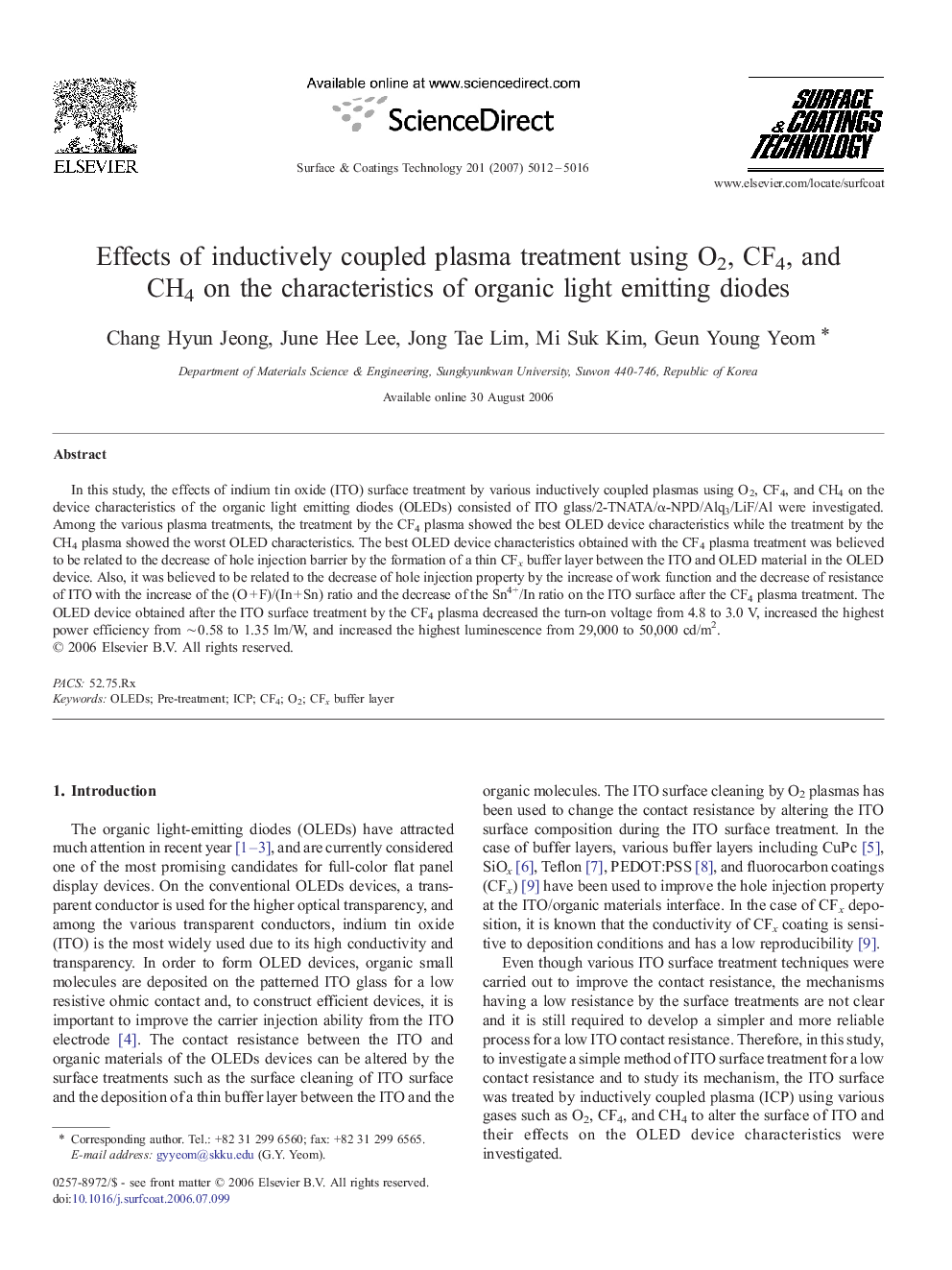| Article ID | Journal | Published Year | Pages | File Type |
|---|---|---|---|---|
| 1661573 | Surface and Coatings Technology | 2007 | 5 Pages |
In this study, the effects of indium tin oxide (ITO) surface treatment by various inductively coupled plasmas using O2, CF4, and CH4 on the device characteristics of the organic light emitting diodes (OLEDs) consisted of ITO glass/2-TNATA/α-NPD/Alq3/LiF/Al were investigated. Among the various plasma treatments, the treatment by the CF4 plasma showed the best OLED device characteristics while the treatment by the CH4 plasma showed the worst OLED characteristics. The best OLED device characteristics obtained with the CF4 plasma treatment was believed to be related to the decrease of hole injection barrier by the formation of a thin CFx buffer layer between the ITO and OLED material in the OLED device. Also, it was believed to be related to the decrease of hole injection property by the increase of work function and the decrease of resistance of ITO with the increase of the (O + F)/(In + Sn) ratio and the decrease of the Sn4+/In ratio on the ITO surface after the CF4 plasma treatment. The OLED device obtained after the ITO surface treatment by the CF4 plasma decreased the turn-on voltage from 4.8 to 3.0 V, increased the highest power efficiency from ∼ 0.58 to 1.35 lm/W, and increased the highest luminescence from 29,000 to 50,000 cd/m2.
